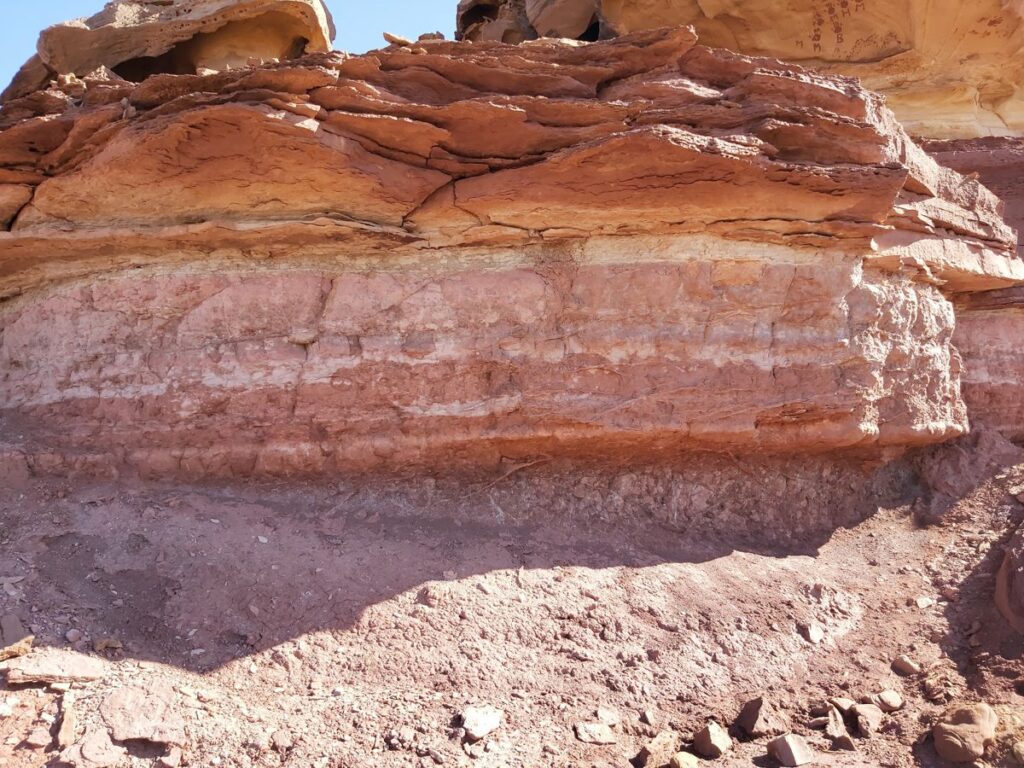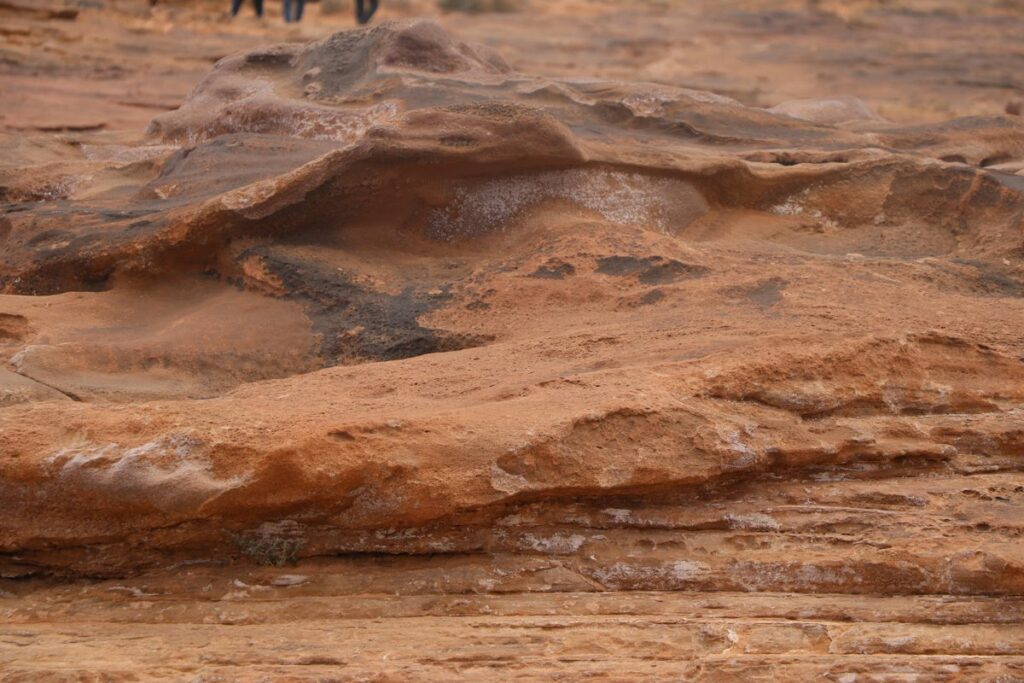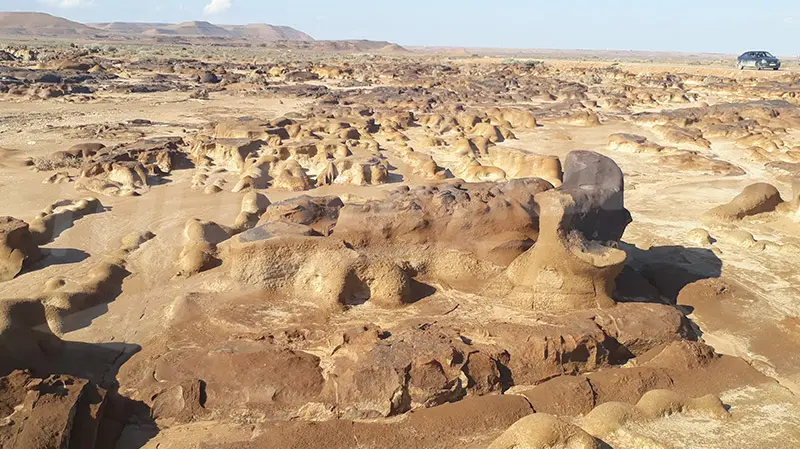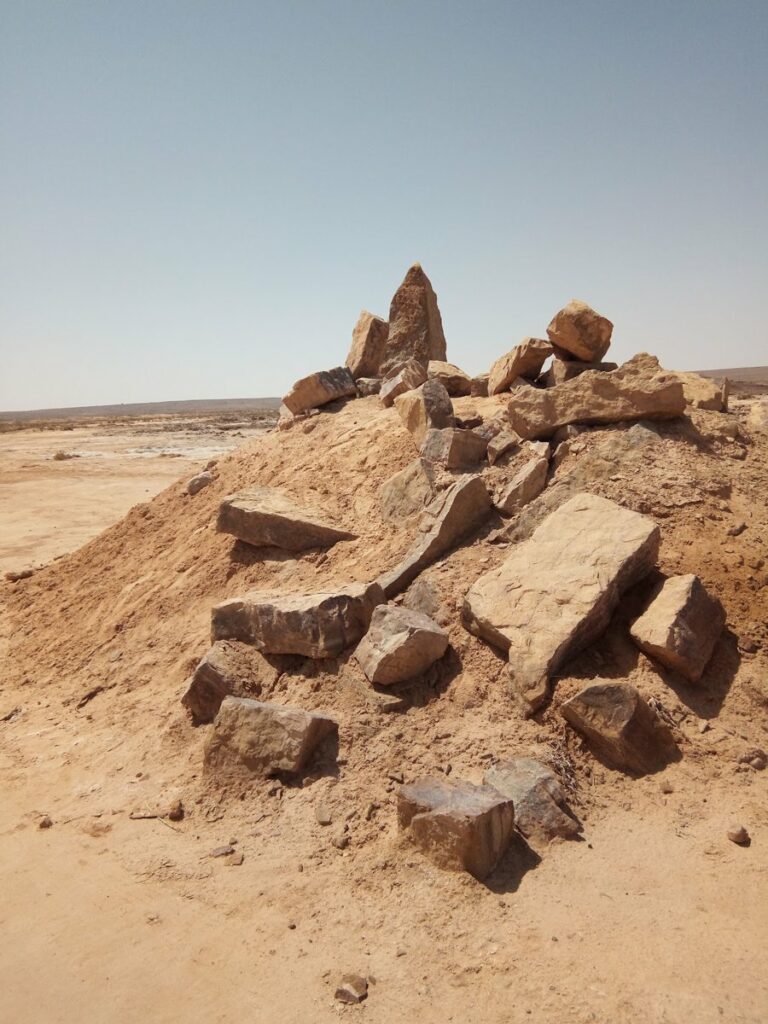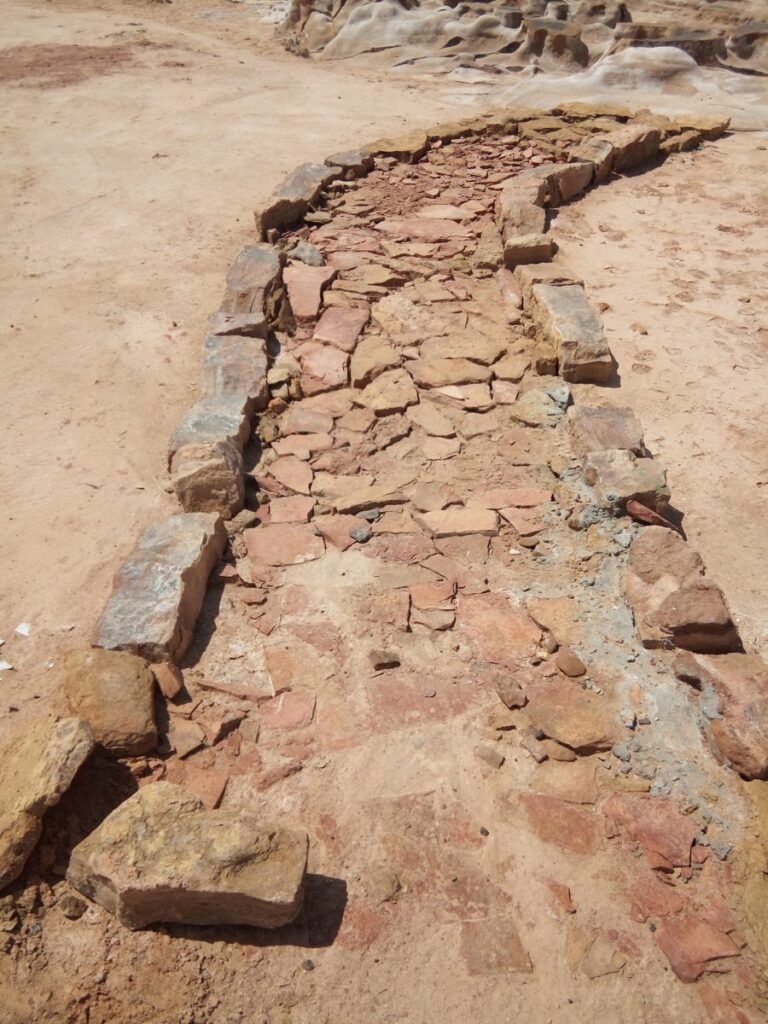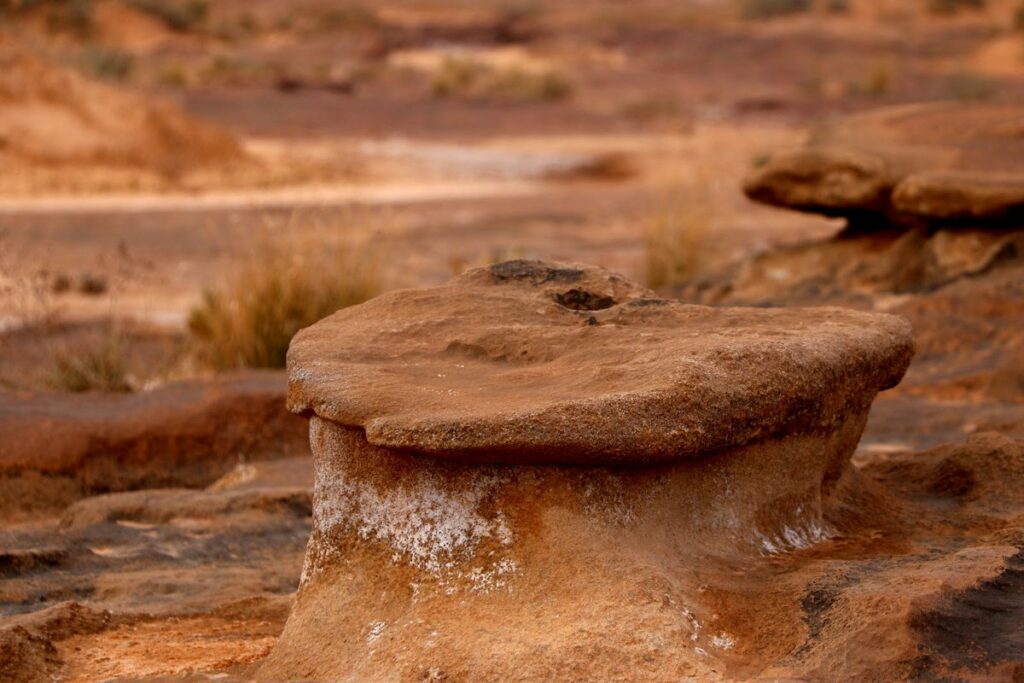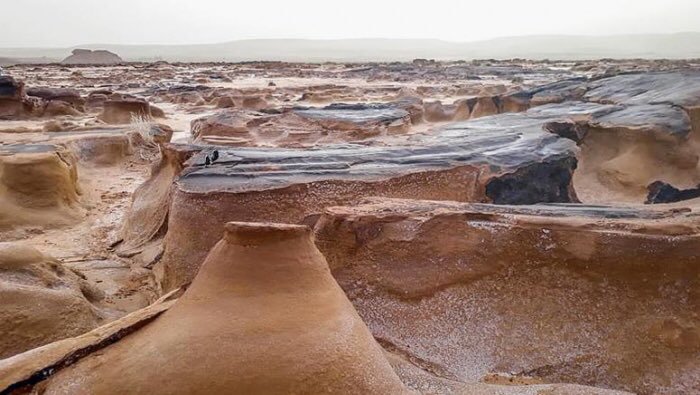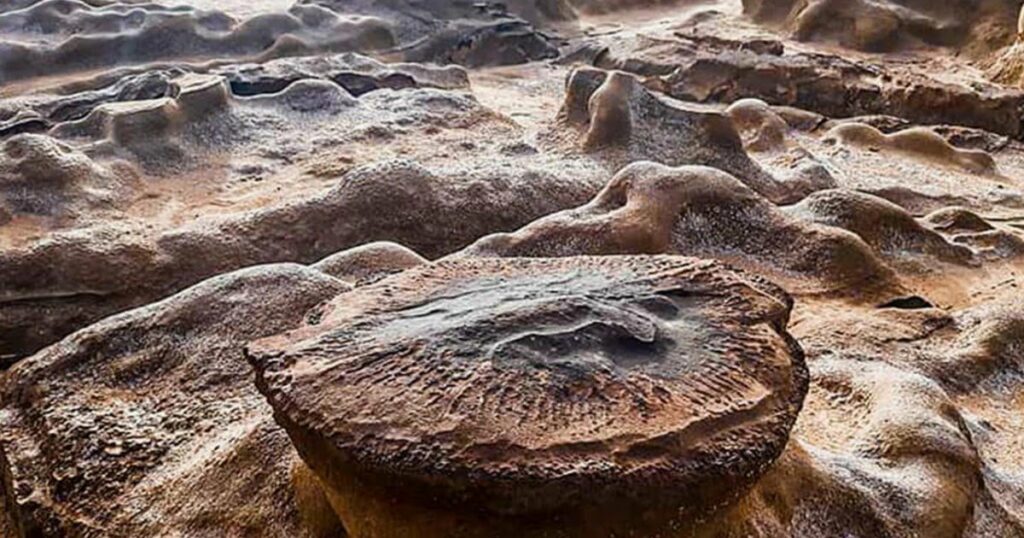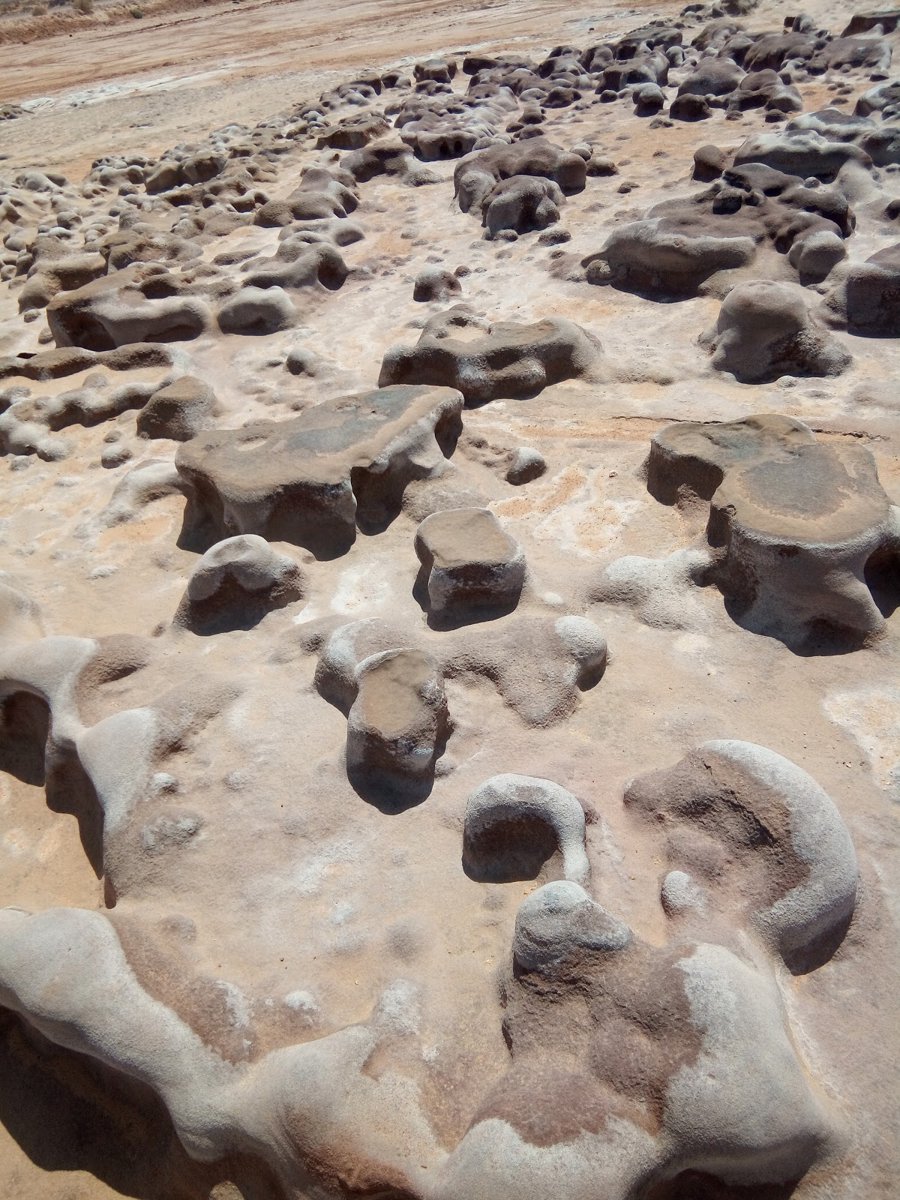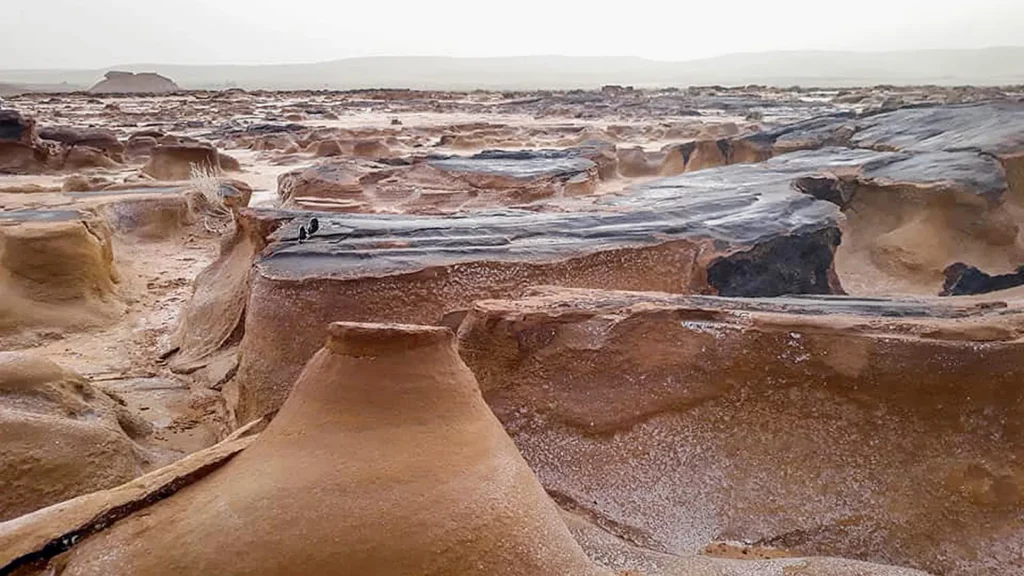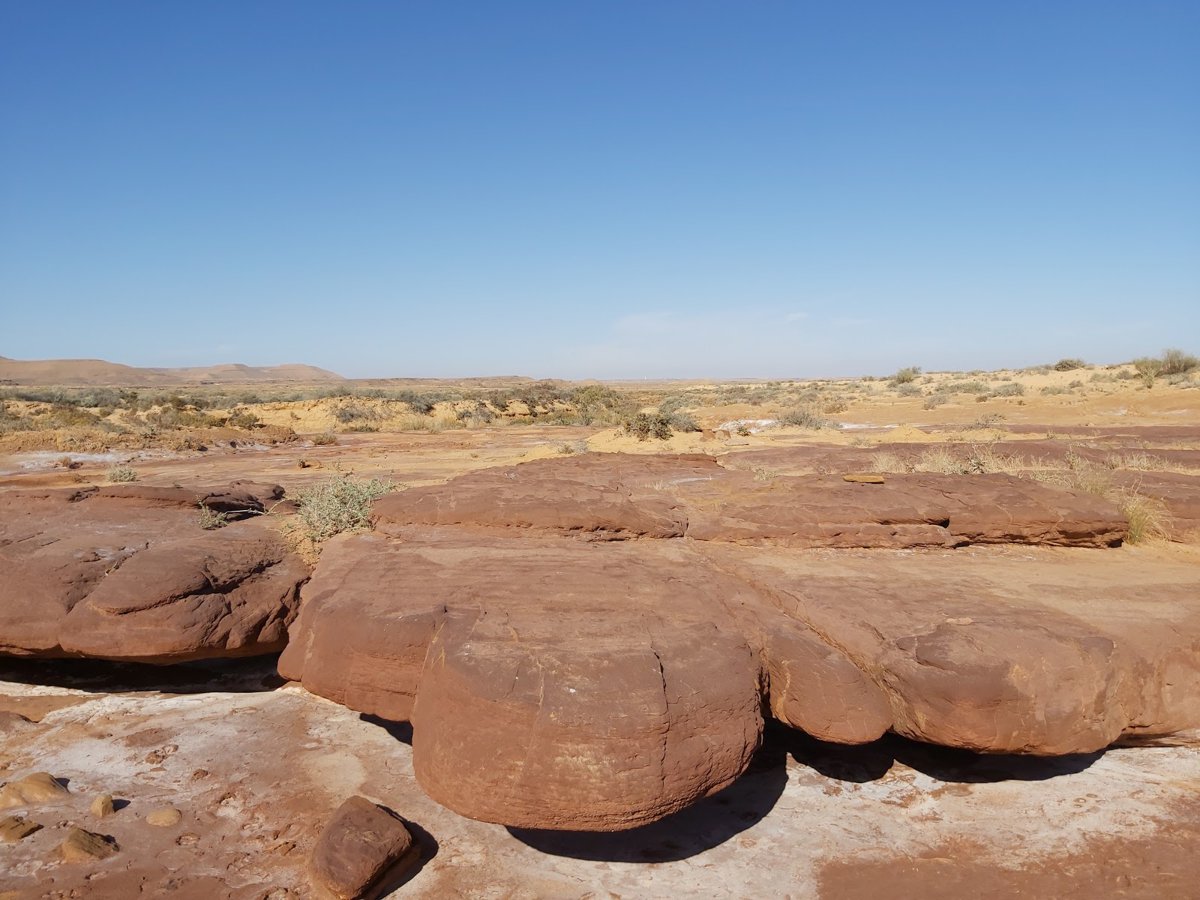The Moon’s surface site was named after its great resemblance to the moon’s surface. When you reach it, you will feel as if you have traveled to space, as it is characterized by rock formations with strange shapes and varied colors, some of which resemble the shape of a mushroom, and some of which are red, dark black, brown and silver. Some of its rocks are interspersed with a spring of water that gives it an unparalleled charm and charm. Do not miss the opportunity to see this dazzling natural landmark.
Not far from the city of “Al-Sammar” in the state of Tataouine, southeast of Tunisia, is the “Ain Charchara” site, which is now known as the “Moon’s Surface”.
In that place, where the rocks take on fungal shapes with their red colors, they take you for moments until you almost think that you are actually on the surface of the “moon”.
For some time, the residents of “Al-Sammar” have been seeking to market the site and invest in its beauty as a tourist destination, so that it becomes a destination for Tunisians and foreigners on holidays and occasions.
The natural site is located 15 km from the city center, and extends over about 5 hectares of petrified rocks due to water erosion.
It is characterized by hundreds of large earthen rocks that cover the place, reaching a height of 120 cm, while thousands of other small rocks, scattered throughout the site, do not exceed 50 cm.
The red color covers all of these rocks, while black is found on the surface of some of them, and spiral lines are carved on many of the large rocks.
The rocks take on various geometric shapes that greatly resemble the shapes of mushrooms, and together they form harmonious artistic paintings.
Al-Hadi bin Jedyan, an activist in civil society, says: “For a year, we have been trying to market the natural site as a tourist destination to be added to many archaeological landmarks, such as the plain palaces and the museum located in the middle of the city.
He adds in his speech, “The lunar surface site has today become a destination for many Tunisians and foreigners, in addition to researchers and students in geology.”
Scientific research is currently being conducted on the site, supervised by the National Office of Mines (governmental), according to the statement of the civil activist.
For his part, the Tunisian researcher at the National Office of Mines, Habib Aljan, says that the history of the site dates back to the Triassic period (between 200 and 230 million years ago), the era that witnessed the emergence of dinosaurs.
He adds that the fossilized earth mounds found in the place are the result of water erosion and the effect of winds over more than 200 million years, especially since it is a salty area.
He explains that as for the geography of the place, it is located in a depression with a geological layer that combines water springs, soil and fossilized sand, and water erosion and wind led to the formation of these rocks.
He pointed out that the name “Moon Surface” was given to this site because the scenes found there of red rocks and the way they are spread are very similar to the scene of the moon’s surface.
As for Mohamed Al-Rouwan, head of the Al-Sahliyya Palaces Association in Al-Sammar (non-governmental), he confirms that the importance of the site was discovered only about two years ago.
He adds: “In the past, we did not pay any attention to it, and we even called it the sabkha or the red branch (a place where water gathers) due to the color of the rocks there.
The place was named “Ain al-Sharshara” due to the water spring located near it, according to the association’s president.
Mohammed al-Rawan continues: “More than a year ago, a number of scientists and geology researchers visited this site and discovered the great similarity between it and the surface of the moon, and at that time it was called “the surface of the moon.”
(From Habib al-Shaabani, with some modifications)
